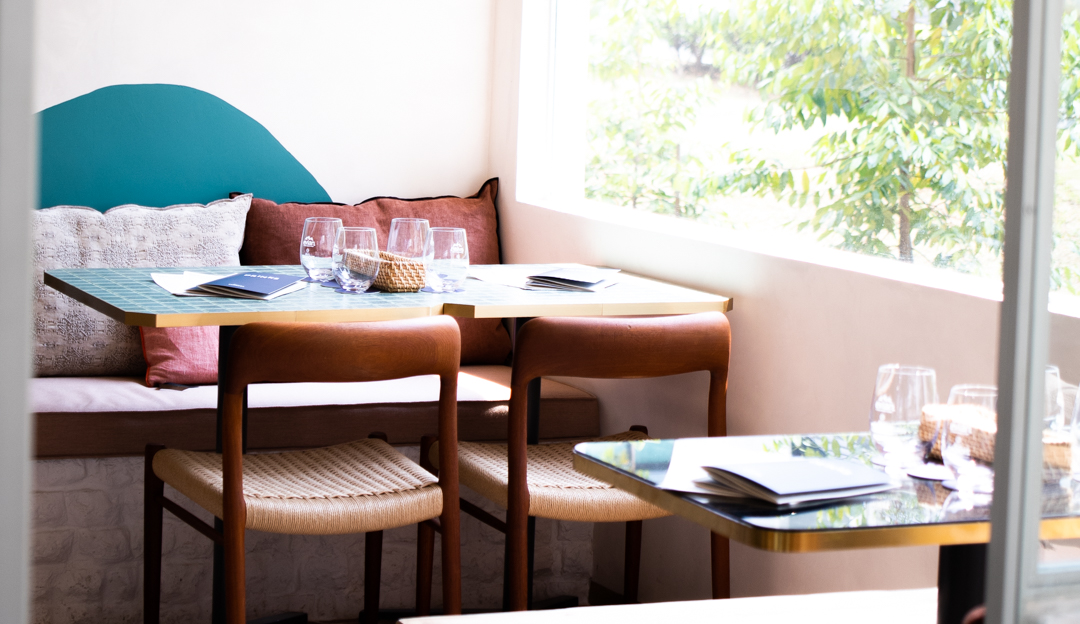It was five years after, however, that we started baking regular loaves of sourdough. This is because it took me five years to work up the nerve to try. For the record, let me say that I’m a complete novice. This was the first time I tried to make sourdough. I had spent the last five years thinking it was too hard and letting The Vegetarian work on it when he had time. Finally, I thought I should give it a go and was pleasantly surprised with the result.
Sourdough bread, unlike regular bread, uses sourdough starter instead of yeast and you will need a good starter to make a loaf of sourdough bread.
Sourdough bread involves two main parts.
- Getting the starter ready and keeping it healthy.
- Baking the actual loaf of bread.
You will see instructions for Making the Sourdough Starter below followed by the Sourdough Bread Recipe. After that are a few more technical instructions for feeding and keeping the starter.

Making a Sourdough Starter
You will need a healthy sourdough starter to begin.
What is important with sourdough is the ratio of water to flour. This is also called the hydration. I’ve been using a ratio of 50% liquid to 50% flour. You can adjust the total quantity using this ratio depending on how much starter you need.
To make enough starter for my first loaf, I used:
Ingredients:
- 100g water
- 50g wholemeal flour
- 50g white flour
- 2tbs of sourdough starter
Method:
- Measure out 100g water.
- Add 2 tablespoons of sourdough starter and mix to combine.
- Add 50g of wholemeal flour and 50g white flour then mix to combine.
- Cover with cling wrap (not too tightly) and leave to sit until it bubbles and doubles in size. This could take between 4 to 8 hours depending on how hot the area around it is. It can take even longer if it’s really cold.
Once your starter is bubbly, use it to make another starter using the same steps above. This is so you always have more to work with. You can put your extra starter in the fridge if you’re not going to use it right away but remember to “feed” it from time to time as I’ve explained at the bottom of this article.
Sourdough Bread Recipe
Ingredients:
- 275g water
- 85g sourdough starter – this is what you made in the first step above. It is also called a mother (but don’t ask me why)
- 365g white high protein flour (also known as bread flour)
- 60g wholemeal flour (you can use whole wheat flour as well but make sure the texture is rather smooth)
- 8g salt
Method:
- Add all the ingredients together.
- Knead for 5 minutes. The dough will feel nice and smooth. You can do this in a food processor as well, using the knead function.
- Rest the dough for 5 minutes.
- Knead again for 5 more minutes.
- On a floured surface, knead it a couple more times and form into a ball shape.
- Leave to rise for about half an hour then knead it out again and shape it into your desired shape. (Place a damp muslin cloth on top of the dough as it rises and check that it doesn’t dry out. If it dries out, it will stick to the dough. Also make sure it is not too heavy or it will not rise well.)
- Leave this to rise until it has doubled in size. This could take 6 hours or overnight if you’re in a cold environment. (We put ours in an air conditioned room overnight because we didn’t want to get up at 2am to put it in the oven.)
- Preheat your oven to the hottest setting (adjust this depending on your oven, but you’re looking for 220 or above) and place a tray of water in the bottom – this creates steam which is somehow good when baking.
- Slash your dough across the top to allow the steam to escape while baking.
- Place the sourdough on a middle tray and bake 20 minutes.
- Turn down the oven to 200 and bake another 20 minutes until it’s golden and toasty on the top and feels hollow when tapped.
- Finally, take it out and eat it!

If it doesn’t work the first time, don’t give up!
Fresh home-made sourdough is well worth the effort involved. Baking a good loaf of sourdough bread can take some trial and error. It is a fine art form with many experienced bakers spending years to perfect. There are lots of blogs out there that will also help you with tips and ideas. Here is one that I found really helpful.
http://www.theclevercarrot.com/2014/01/sourdough-bread-a-beginners-guide/
I’m just a novice and have no idea so my baking of sourdough is by no means a fine art. But it still tasted fantastic, fresh out of the oven and slathered with butter. Yum! I aspire to be like all those artisan bakers out there but for now, a novice’s loaf is what I get and I’m happy with that.
By the way, sourdough has great health benefits. There is something about the fermentation of it and all that. See the article on ordinarypeople.ink about fermentation by Sarah Shaw, We are 1% DNA and 99% Bacteria.
Now for the more “technical” bits. This is what scared me off from making sourdough but once you get the hang of it, it becomes surprisingly easy. Even if it is a bit tricky and time consuming.
Feeding a starter
Once you have a healthy starter, you can put it into the fridge and keep it indefinitely. You just have to feed it ever so often. We put ours in a big mason jar and follow the steps below every two or three days.
- Remove 40g of the starter from the jar.
- Add in 20g of water.
- Add in 10g of white flour and 10g of wholewheat flour.
- Mix well and place back into the fridge.
Do that every two or three days to keep your starter alive. I usually use the 40g that I removed to make a fresh starter of 50g water and 50g flour (half/half white and wholewheat). I leave that out on the kitchen bench to bubble up so I can bake a loaf of bread.
If your starter dies, you’ll know it! It smells rotten and there can be a black film at the top of the mixture. This happens when you ignore your starter for too long. I was horrified when my husband said he could resurrect it because to me, what’s dead is dead and should probably stay that way. But I stand corrected. We resurrected the sourdough that had been dead for at least a year! (Sorry, I don’t have photographs to tell the story. I was so sceptical about this that I didn’t bother.) Don’t be disappointed if it doesn’t work though. It doesn’t always come back to life.
Resurrecting “Dead” Sourdough
Our sourdough starter was dead when I decided to give this a go so we had to resurrect it. My husband has always been the one to look after the starter so with a little help from him, we got it to a state where it could be used.
Method:
- Scrape away the black area at the top and get a good spoonful or two of the starter at the bottom.
- Follow the process above for Making a Sourdough Starter. (Do this once and if it bubbles even a tiny bit, you might be able to resurrect your sourdough, if nothing happens, you may need to find more sourdough starter elsewhere).
- Repeat the same process for Making a Sourdough Starter until you see the starter becoming more and more bubbly with each round. It will also start to smell better and better.
- Keep doing this until you have a fresh, healthy starter to work with again.
Good luck!

This article was originally published on www.ordinarypeople.ink and may have been edited for this platform.
All images by Angela Manners.












